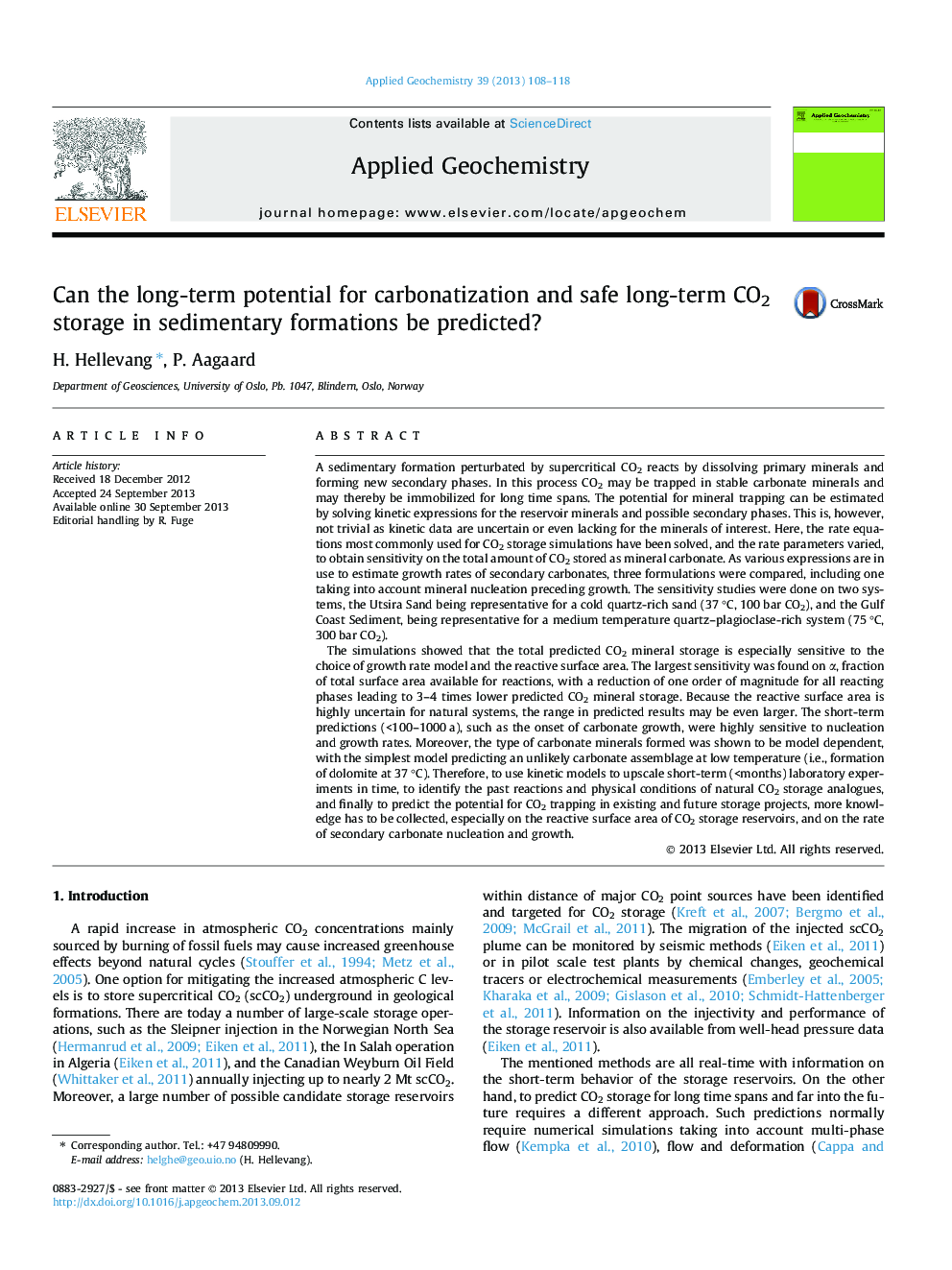| Article ID | Journal | Published Year | Pages | File Type |
|---|---|---|---|---|
| 4435894 | Applied Geochemistry | 2013 | 11 Pages |
•The uncertainty in modeling carbonate storage is largest at short time-scales.•Various cases eventually converges towards a common carbonate storage potential.•The uncertainty on short time-scales are largest for cold reservoirs.
A sedimentary formation perturbated by supercritical CO2 reacts by dissolving primary minerals and forming new secondary phases. In this process CO2 may be trapped in stable carbonate minerals and may thereby be immobilized for long time spans. The potential for mineral trapping can be estimated by solving kinetic expressions for the reservoir minerals and possible secondary phases. This is, however, not trivial as kinetic data are uncertain or even lacking for the minerals of interest. Here, the rate equations most commonly used for CO2 storage simulations have been solved, and the rate parameters varied, to obtain sensitivity on the total amount of CO2 stored as mineral carbonate. As various expressions are in use to estimate growth rates of secondary carbonates, three formulations were compared, including one taking into account mineral nucleation preceding growth. The sensitivity studies were done on two systems, the Utsira Sand being representative for a cold quartz-rich sand (37 °C, 100 bar CO2), and the Gulf Coast Sediment, being representative for a medium temperature quartz–plagioclase-rich system (75 °C, 300 bar CO2).The simulations showed that the total predicted CO2 mineral storage is especially sensitive to the choice of growth rate model and the reactive surface area. The largest sensitivity was found on α, fraction of total surface area available for reactions, with a reduction of one order of magnitude for all reacting phases leading to 3–4 times lower predicted CO2 mineral storage. Because the reactive surface area is highly uncertain for natural systems, the range in predicted results may be even larger. The short-term predictions (<100–1000 a), such as the onset of carbonate growth, were highly sensitive to nucleation and growth rates. Moreover, the type of carbonate minerals formed was shown to be model dependent, with the simplest model predicting an unlikely carbonate assemblage at low temperature (i.e., formation of dolomite at 37 °C). Therefore, to use kinetic models to upscale short-term (
